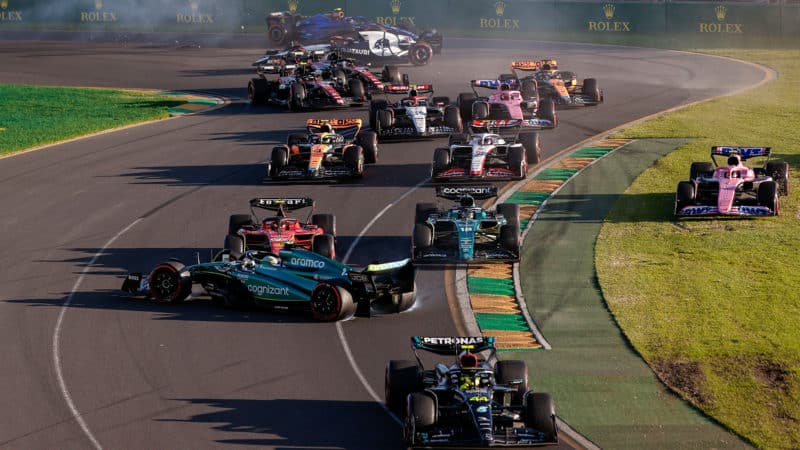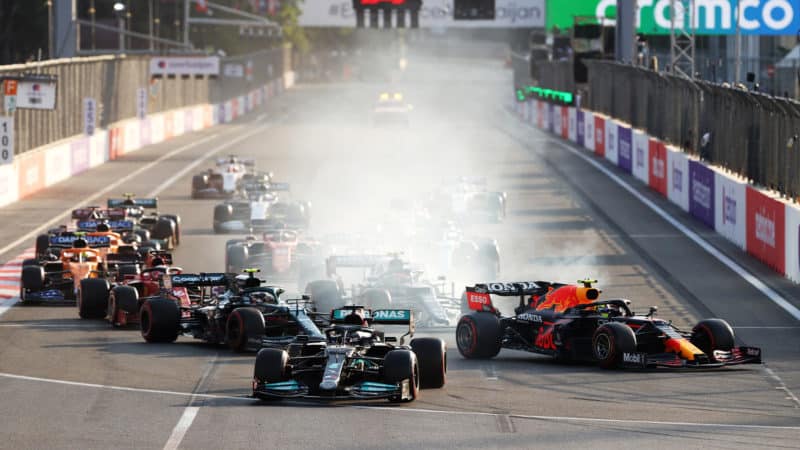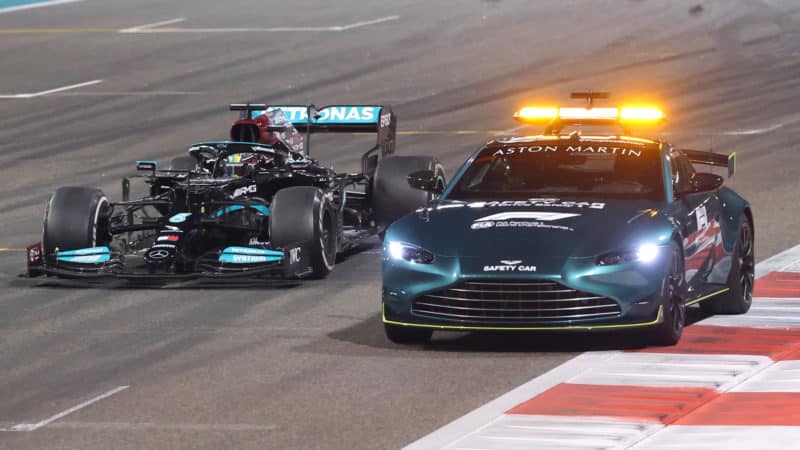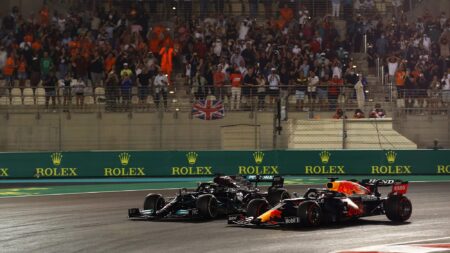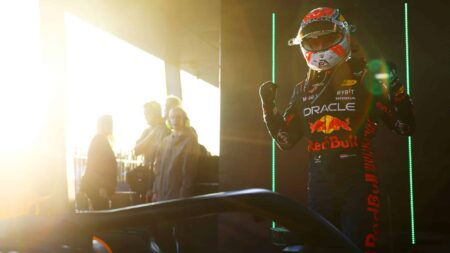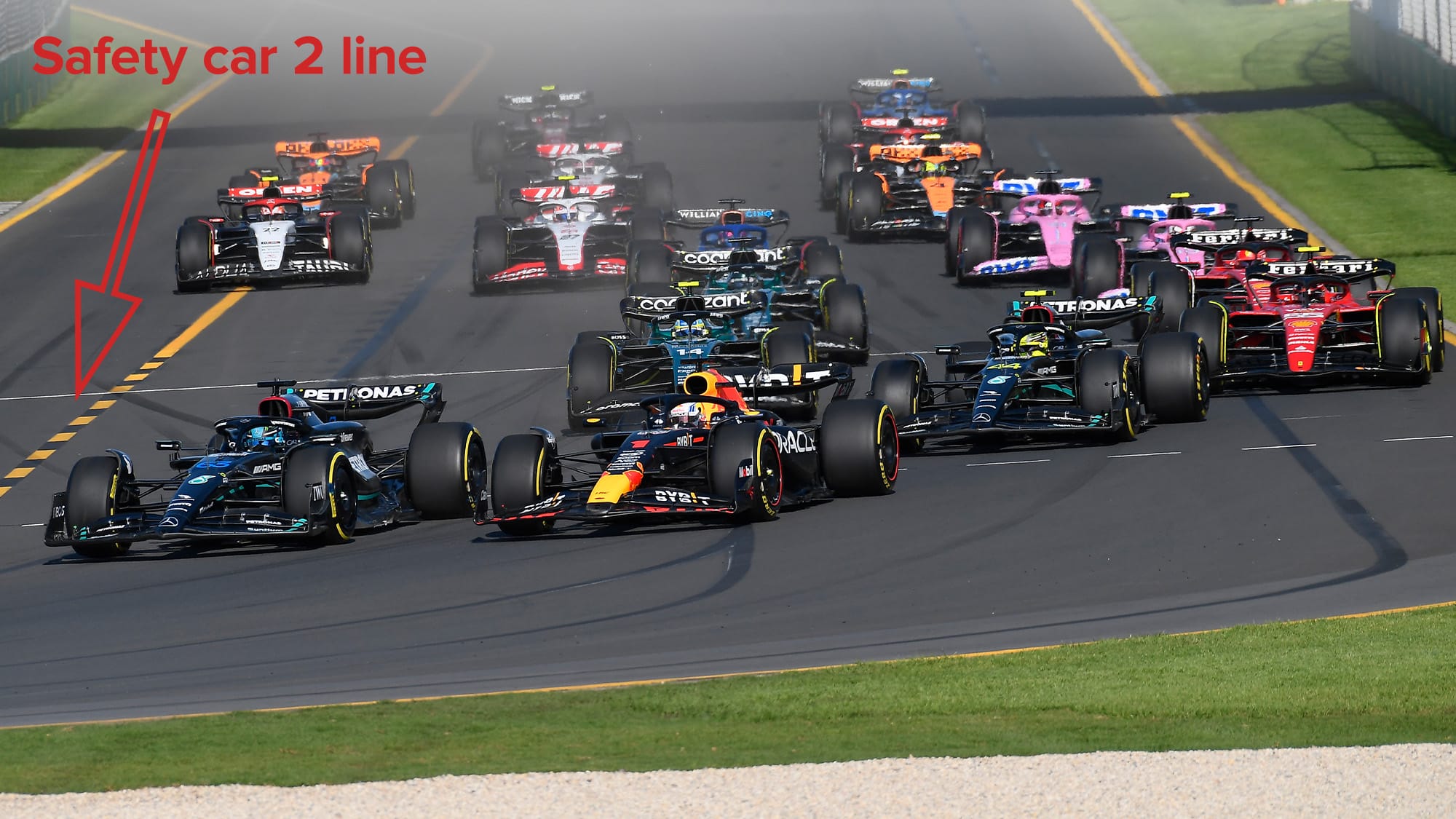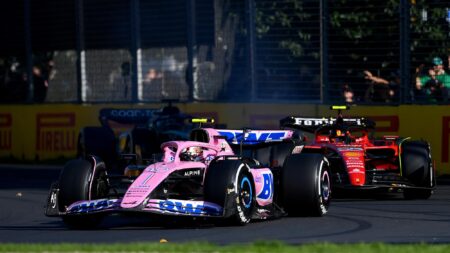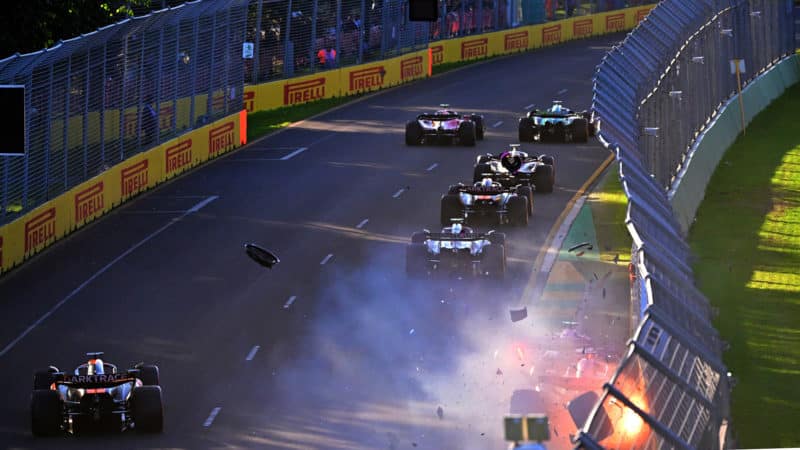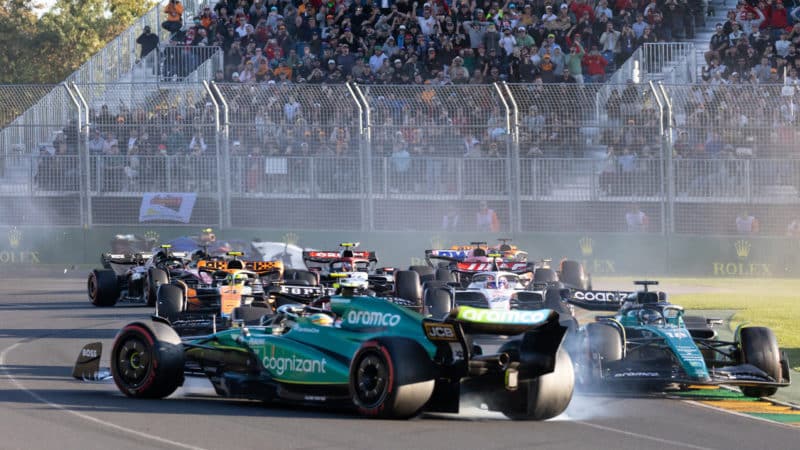Despite the clock ticking away and the possibility existing that the race would run under the safety car to the finish – with Hamilton ahead and therefore winning the championship – Michael Masi chose not to red flag the race and give us a two or three lap sprint to the flag.
His essential reasoning was that the track wasn’t blocked and nor was there a debris field, as in the case of the Verstappen shunt in Baku.
In the end, helped by not all the lapped cars being waved past the leaders, we did have time for that one flying lap to the flag, with Verstappen on new tyres chasing Hamilton on his old rubber. And we all know what happened next.
Monza, 2022
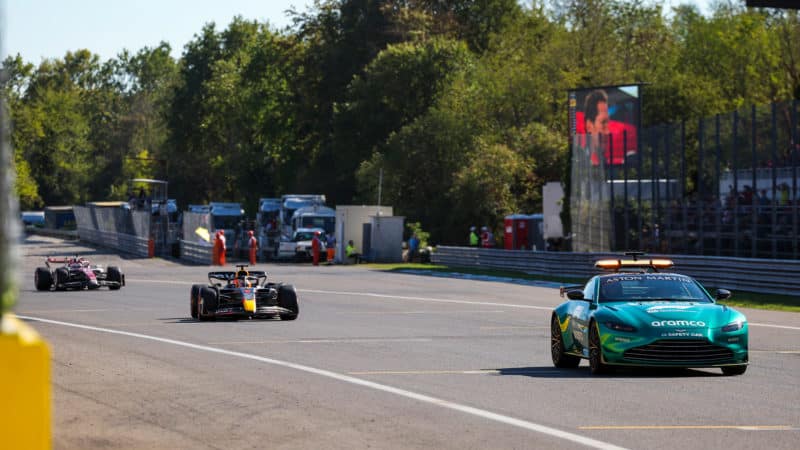
Processional finish was a low-key end to Italian GP
Florent Gooden / DPPI
We had another example in Monza last year when Daniel Ricciardo’s McLaren stopped and was stuck in gear. The crane was on the other side of the track and even with the safety car out it couldn’t find a long enough gap to chug across. Instead laps ticked away and the race ended as a damp squib behind the safety car when the option was there to stop it and have a sprint to the flag.
The three red flags of the 2023 Australian Grand Prix
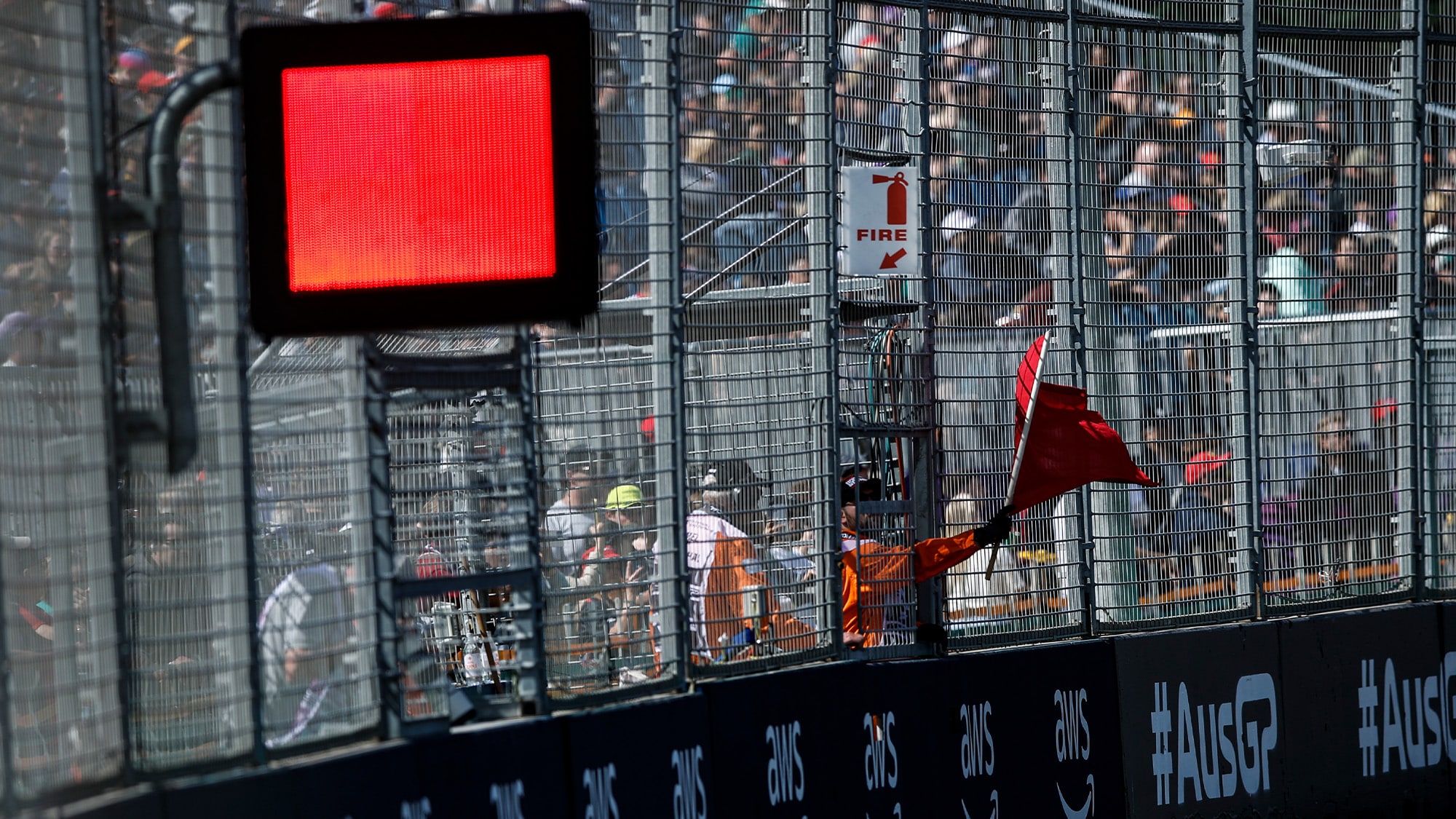
Red flag 1
In Australia last weekend there was no such hesitation in deploying the red from race director Niels Wittich.
The first, for Alex Albon’s crash, was essentially because so much gravel and dirt had been thrown onto the track. Some drivers questioned it, especially as they went through once behind the safety car, and it did seem to be a 50-50 call. However, as Fernando Alonso said, race control had more information than the drivers in their cockpits.
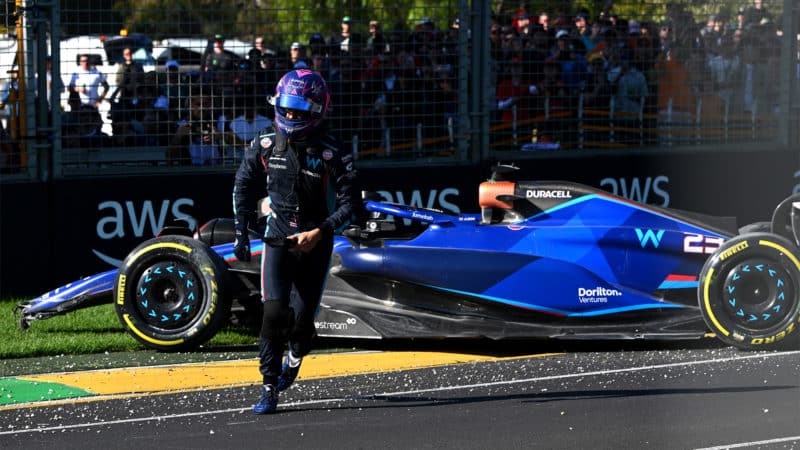
Albon leaves stranded car and gravel-strewn track
Clive Mason/F1 via Getty Images
“I was surprised with all the red flags, to be honest,” he said. “The first one I think, behind the safety car and there was a little bit of gravel, but nothing really too bad on track.
“But we never know in the car what’s going on — on the track itself. So apparently, maybe one barrier was not properly fit there, so I think the FIA has more information than us. So if there is a red flag, it has to be for a reason.”
The frustration for many drivers was that red flags give everyone a free change of tyres, and those who had already pitted and committed to a certain strategy – including George Russell and Carlos Sainz – lost out.
Red flag 2
The second red flag came after Kevin Magnussen hit the wall coming out of Turn 2. While the Dane kept going and parked in a relatively neutral place his shattered right rear wheel left shrapnel on the track down to Turn 3. Given the speeds involved, a red flag was a sensible call.
